

EXPECT THE EXTRAORDINARY

F R A N Z L I S Z T O N C E R E M A R K E D , “In Hungary, all native music, in its origin, is divided naturally into melody destined for song or melody for the dance ”
As one of the first Hungarian pianists and composers to achieve widespread recognition outside his homeland, it makes sense that Liszt was enchanted by the infectious drive of Hungarian folk music (heard most famously in his series of Hungarian Rhapsodies) Not only did this provide a treasure trove of artistic inspiration, it also helped his music stand out amidst the heavily German-dominated realm of 19th-century concert life.
Even in Liszt’s more “serious” compositions that weren’t directly inspired by folk music, an undeniable craft is still present. Les préludes was one of 13 symphonic poems Liszt penned between 1848 and 1882. Taking inspiration from the work of French poet Alphonse de Lamartine, it is an impressive creation that presents a series of constantly shifting variations within a kaleidoscopic orchestral tapestry. Tonight’s concert pairs Liszt with two works by later Hungarian composers: Ernő Dohnányi and Béla Bartók. Though most of Liszt’s music (and flamboyant performance style) had fallen out of favor by the 20th century, many of his countrymen still admired their musical forefather. Bartók who was only 5 years old when Liszt passed away even pointedly reflected, “I came to recognize that, for the continued development of musical art, [Liszt’s] compositions were more important than either Wagner’s or [Richard] Strauss’s.”
Bartók’s Concerto for Orchestra arguably his most famous and beloved work owes more than a small debt to Liszt in its ample use of folk-inflected melodies and rhythms And it is indeed a true concerto for orchestra, giving every member of the ensemble a chance in the spotlight.
Lesser known but no less remarkable is the Symphonic Minutes of Ernő Dohnányi, which presents a compact, yet formidable workout for the orchestra. (If the composer’s last name looks familiar to TCO history buffs, Ernő was the grandfather of Cleveland Orchestra Music Director Laureate Christoph von Dohnányi.)

One other trivia tidbit for the road: Tonight’s conductor, Christoph Koncz, is also a skilled violist and starred as the fictional child prodigy Kaspar Weiss (left) in the 1998 film The Red Violin. The more you know
Ke vin McBrien
Kevin McBrien is The Cleveland Orchestra’s editorial & publications manager





























THE MUSIC

LI S Z T & B A RT Ó K
Thursday, July 31, 2025, at 7 PM
Christoph Koncz, conductor
Franz Liszt (1811–1886)
Ernő Dohnányi (1877–1960)
Béla Bartók (1881–1945)
Les préludes (Symphonic Poem No. 3) 15 minutes
Symphonic Minutes, Op. 36 15 minutes
I. Capriccio
II. Rapsodia
III. Scherzo
IV. Tema con variazioni
V. Rondo
I N T E R M I S S I O N 20 minutes
Concerto for Orchestra 35 minutes
I. Introduzione: Andante non troppo Allegro vivace
II. Giuoco delle coppie: Allegretto scherzando
III. Elegia: Andante non troppo
IV. Intermezzo interrotto: Allegretto
V. Finale: Pesante Presto
Total approximate running time: 1 hour 25 minutes
Thank you for silencing your electronic devices.
The Cleveland Orchestra would like to thank Presenting Sponsor Thompson Hine LLP for generously supporting Summers @ Severance.
Les préludes (Symphonic Poem No . 3)
by Franz Liszt
B O R N : October 22, 1811 , in Doborjân , Hungary (now Raiding , Austria)
D I E D : July 31 , 1886, in Bayreuth , Germany
▶ C O M P O S E D : 1845 – 54
▶ W O R L D P R E M I E R E : February 23, 1854, conducted by the composer
▶ C L E V E L A N D O R C H E S T R A P R E M I E R E : December 11, 1918 , led by Music Director
Nikolai Sokoloff
▶ O R C H E S T R AT I O N : 3 flutes (3rd doubling piccolo), 2 oboes , 2 clarinets , 2 bassoons , 4 horns , 2 trumpets , 3 trombones , tuba , timpani, percussion (bass drum , cymbals , snare drum), harp , and strings
▶ D U R AT I O N : about 15 minutes
N O O N E I N T H E 1 8 4 0 S had a more dazzling pianistic career than Franz Liszt Lionized throughout Europe as a travelling virtuoso, Liszt was widely regarded as the “Paganini of the piano.” After 1848, though, he abruptly stopped his concert tours and moved to Weimar No longer a concert pianist, he became the conductor of the court orchestra.
It was in the wake of these fundamental changes that Liszt turned his attention to composing orchestral music.
But he had no intentions of cultivating the four-movement symphonic form inherited from Beethoven, as Robert Schumann had done before him or Brahms would do subsequently. No, Liszt’s ambitions were of a different kind. Just as his early piano music often evoked “poetic and religious harmonies”
or picturesque places (as opposed to the preludes, nocturnes, and mazurkas of his friend Chopin), so in his symphonic works he wanted openly to acknowledge the inspiration received from extra-musical sources.
In Weimar, Liszt began work on what would become a cycle of 12 symphonic poems. The decision to write orchestral music with literary or artistic connections soon embroiled him in controversies over the question of “program music” versus “absolute music.” This artificial division and the ultimately fruitless disputes arising from it missed the basic fact that the works’ relationships to their literary models were not at all what they were usually believed to be.
That is certainly the case with Les préludes, the title of which comes from

a poem by Alphonse de Lamartine (1790 – 1869), a leading French Romantic poet and statesman. Liszt had been familiar with Lamartine’s work since his teens, and soon afterwards became a member of the poet’s circle. However, Liszt did not adopt the title until 1853, when he was in the final stages of his
work on the piece, and much, if not all, of the work’s musical material originated in another project totally unrelated to Lamartine.
German photographer Franz Hanfstaengl captured this image of Franz Liszt in 1858, shortly after the composer had completed Les préludes.
Even so, Les préludes still has some undeniable connections with Lamartine. Musicologist Alexander Main, who compared the two works in detail, found that the amorous, dramatic, pastoral, and warlike sections of Liszt’s piece do indeed correspond to their poetic counterparts (though Liszt reversed the order of the last two). Yet Liszt unified his musical material in a way that has no parallels in the poetry: he showed that the various sections were different aspects of a single general idea. Les préludes became famous as one of the most successful examples of Liszt’s technique of thematic transformation, which he brought to fruition during his Weimar period. In this new kind of variation form, a main theme is repeated throughout a work with fundamental changes in rhythm, tempo, and harmony that completely alter its character.
In Les préludes, Liszt subjected two separate themes to character transformation. The first one, heard in the powerful Andante maestoso section following the introduction, alludes to the “Muss es sein?” (Must it be?) theme from
Beethoven’s last string quartet (No 16) This theme will later reappear in lyrical and jubilant guises. A second theme, first played in an espressivo manner by a quartet of horns, is restated in a pastoral manner and then as a military march. There are substantial transition passages linking the various sections. It is hardly an accident, therefore, that Liszt, in his preface to the printed score, stressed the transitions from one episode to the next rather than treating them separately:
What else is life but a series of preludes to that unknown hymn, the first and solemn note of which is intoned by D eath? Love is the dawn of all existence; but what fate is there whose first delights of happiness are not interrupted by some storm, whose fine illusions are not dissipated by some mortal blast, consuming its altar as though by a stroke of lightning? And what cruelly wounded soul, issuing from one of these tempests, does not endeavor to solace its memories in the calm serenity of rural life? …
adapted from a note by Peter Laki

Peter Laki is a musicologist and frequent lecturer on classical music He is a visiting associate professor of music at Bard College
Symphonic Minutes, Op . 36
by Ernő Dohnányi
B O R N : July 27, 1877, in Pozsony, Hungary (now Bratislava , Slovakia)
D I E D : February 9, 1960, in New York
▶ C O M P O S E D : 1933
▶ W O R L D P R E M I E R E : October 23, 1933, conducted by the composer
▶ C L E V E L A N D O R C H E S T R A P R E M I E R E : February 1, 2007, led by Iván Fischer
▶ O R C H E S T R AT I O N : 2 flutes (2nd doubling piccolo), 2 oboes (2nd doubling English horn), 2 clarinets (2nd doubling bass clarinet), 2 bassoons , 4 horns , 2 trumpets , 3 trombones , timpani, percussion (triangle, snare drum , cymbal, bass drum , glockenspiel), harp , celesta , and strings
▶ D U R AT I O N : about 15 minutes
“T H E M U S I C A L L I F E O F B U D A P E S T may be summed up in a single name Ernő Dohnányi. ” Béla Bartók wrote these words in a 1920 article, and he wasn’t exaggerating As a pianist, composer, conductor, and teacher, Ernő Dohnányi (also known as Ernst von Dohnányi) clearly dominated the musical scene of the Hungarian capital, and was one of those prodigious musicians whose prowess becomes the stuff of legends. One of the stories that used to make the rounds was that Dohnányi arrived in a small Hungarian town to play Beethoven’s First Piano Concerto with a local orchestra. The piano was badly out of tune it sounded a half-step too low. Dohnányi proceeded to play the concerto a half-step higher in order to be on the same pitch as the orchestra a difficult feat of musical transposition, but apparently accomplished with ease
This great artist composed with the same facility he brought to every other aspect of his career. When the orchestra of the Philharmonic Society, of which he was the music director, celebrated its 80th anniversary in 1933, he composed a five-movement suite under the title Symphonic Minutes. Upon its premiere, the leading Hungarian music critic of the time, Aladár Tóth, praised its great sense of harmony, sure handling of form, and extraordinary lightness of touch. At the same concert, Zoltán Kodály’s D ances of Galánta was also premiered, and five folk-song arrangements by Bartók were performed; these three men were acknowledged, by general consensus, as the greatest living composers in Hungary.
In the five brief movements of Symphonic Minutes, Dohnányi visits a whole array of musical moods, starting with a whimsical Capriccio, brilliantly

movement Rondo, by contrast, is a folk dance in perpetual motion, providing an ending full of energy and dynamism.
orchestrated and filled with “spicy” harmonies. The second-movement Rapsodia (or Rhapsody) evokes Romantic memories of a bygone era through its opening English horn solo in a free rhythm this kind of improvisatory melody carried connotations of shepherds playing their pipes on the puszta, the vast Hungarian Plains.
A sparkling Scherzo in mixed meter is followed by a set of variations on a brief theme of archaic flavor. In the score, Dohnányi identifies the melody as being from the 17th century. The sounds of the harp and celesta transport us into a distant fairy-tale world. Delicate woodwind solos and (in one of the variations) groups of solo strings create a gentle atmosphere. The rambunctious fifth-
In 1934, Dohnányi’s second wife, the actress and dancer Elsa Galafrés, choreographed a ballet titled The Sacred Torch, based on her husband’s music. This production, which included the Symphonic Minutes among its musical works, opened at the Budapest Opera on December 6, 1934, and was performed with great success in several European cities.
Dohnányi was appointed director of the Budapest Conservatory in 1934 before fleeing war-torn Hungary a decade later. He soon settled in the US and taught music for 10 years at Florida State University, where his grandson, future Cleveland Orchestra Music Director Christoph von Dohnányi, studied with him for a time.
Peter Laki
Alongside his Symphonic Minutes, Ernő Dohnányi (seen here at the piano, c. 1920) composed operas , symphonies , concertos , chamber works , and choral music.


Concerto for Orchestra
by Béla Bartók
B O R N : March 25, 1881 , in Nagyszentmiklós , Hungary (now Sânnicolau Mare , Romania)
D I E D : September 26, 1945, in New York
▶ C O M P O S E D : 1943
▶ W O R L D P R E M I E R E : December 1, 1944, at Carnegie Hall, by the Boston Symphony Orchestra under Serge Koussevitzky
▶ C L E V E L A N D O R C H E S T R A P R E M I E R E : January 3, 1946, led by Music Director George Szell
▶ O R C H E S T R AT I O N : 3 flutes (3rd doubling piccolo), 3 oboes (3rd doubling English horn), 3 clarinets (3rd doubling bass clarinet), 3 bassoons (3rd doubling contrabassoon), 4 horns , 3 trumpets , 3 trombones , tuba , timpani, percussion (side drum , bass drum , tam-tam , cymbals , triangle), 2 harps , and strings
▶ D U R AT I O N : about 35 minutes
B É L A B A RT Ó K WA S 5 9 Y E A R S O L D when he immigrated to the United States with his second wife and former pupil, Ditta Pâsztory-Bartók. His adjustment to the new environment was made difficult, even traumatic, by several factors. Bartók, who had been the foremost musical celebrity in his native Hungary, became an émigré composer who, although not entirely unknown in the Western Hemisphere, was far from being a household name and had to practically relaunch his career.
But Bartók was ill-equipped for such a struggle. He was not interested in university positions and concertized little as a pianist. He did receive a grant to transcribe a collection of recordings from Yugoslavia, preserved at Columbia University, but the grant ran out before
Bartók could finish the project. It was also at this time late in 1942 that Bartók’s health first began to deteriorate, with fevers, pain, and weakness, but with no immediate diagnosis (these were the first signs of the leukemia that would claim his life in 1945).
The situation was grave indeed when one day Bartók, lying in a New York hospital, received an unexpected visit from Serge Koussevitzky, the conductor of the Boston Symphony Orchestra Koussevitzky commissioned a new orchestral work in memory of his wife and left a check for half the amount of the commission on the composer’s
Béla Bartók found a new lease on life in writing the Concerto for Orchestra , an ensemble showpiece that presents his characteristic mixture of modernist and folk-like elements

bedside table. This commission quite literally gave Bartók, who had composed virtually nothing for the previous two years, a new lease on life. As Agatha Fassett, a close personal friend, recalled, “It seemed as if the obstructed forces within him were released at last, and the entire center of his being had been restored and reawakened, even though he was still lying limp on his bed, hardly any stronger than he was before he went to the hospital.”
Work on the score proceeded rapidly, thanks in part to the American Society of Composers, Authors, and Publishers (ASCAP), which arranged for Bartók to spend the summer months of 1943 at a private sanatorium at Saranac Lake, New York. Bartók’s health improved and the full score of the Concerto for Orchestra was completed by October 8.
Bartók wrote an “Explanation” for the first performance, in which he stated:
The title of this symphony-like instrumental work is explained by its tendenc y to treat the single instrument groups in a ‘concertant’ or soloistic manner. … The general mood of the work represents apart from the jesting second movement a gradual transition from the sternness of the first movement and the lugubrious death-song of the third, to the life-assertion of the last one.
The first movement opens with a slow introduction played by cellos and basses, which creates the impression of a world being born out of primeval chaos. The first “concertant” solo, for flute,
still has something indecisive to it, but the second, for three trumpets, is a fully formed idea that borrows its formal structure (though not its actual melody) from Hungarian folk song. The tempo gradually increases and reaches Allegro vivace; this energetic music is only temporarily interrupted by a lyrical interlude in which the oboe and the harp seem to carry on an intimate conversation.
The second movement, “Giuoco delle coppie” (Game of Pairs), opens and closes with a brief side drum solo. Five pairs of wind instruments play their themes in parallel intervals; we hear, in turn, two bassoons in sixths, two oboes in thirds, two clarinets in sevenths, two flutes in fifths, and finally, two muted trumpets in major seconds. A lyrical “trio” section for brass follows, after which the five wind themes are repeated with some slight variances before the movement’s close.
The third-movement Elegy opens with ascending motives that clearly allude to the first movement’s slow introduction. Throughout this mysterious music, glissandos on the harp and the soft woodwind figurations recall a moment in Bartók’s opera, Bluebeard’s Castle, when the opera’s heroine, Judith, sees the Lake of Tears behind the sixth door of the castle. The middle section is based on the same quasi-folk song we heard in the introduction to the first movement Played this time by the full orchestra, it sounds much more tragic than before. The movement ends with a haunting
piccolo solo, after which the boisterous string unisons of the fourth movement come as quite a jolt.
Bartók told his pupil, pianist György Sándor, a little story he associated in his mind with the fourth-movement “Intermezzo interrotto” (Interrupted Intermezzo): “A young man serenades his sweetheart. He is surprised by a gang of drunkards who smash his instrument Despite the pain he feels, he continues his serenade.” There are some clues in the movement, however, that reveal a meaning running deeper than this story might suggest.
Many people agree that the beautiful cantabile melody played by the violas is a modified version of a popular Hungarian operetta melody, though the musical “interruption” in this movement has caused a great deal of commentary. Bartók appeared to be quoting and parodying a prominent passage from Shostakovich’s Seventh Symphony (“Leningrad”), which had recently created a major sensation in the United States. (Bartók’s son Peter tells the story of how his father listened

to the radio broadcast of Shostakovich’s symphony and objected to what seemed endless repetitions of the same theme.)
But Bartók’s theme also bears striking similarity to the song “Da geh’ ich zu Maxim” ( You’ll find me at Maxim’s) from Franz Lehar’s operetta The Merry Widow (a resemblance probably not intended by either Bartók or Shostakovich). Whatever its true intention, its function in Shostakovich’s symphony was to “interrupt” peaceful life, just as its Bartókian parody interrupts a peaceful serenade.
The fifth-movement Finale belongs to the type of last movements inspired by the spirit of folk dance that Bartók used at the end of many of his major works. After the opening horn fanfare, the violins start a perpetual motion in rapid sixteenth-notes that runs through almost the entire movement. In the central section, a large-scale fugato (a section based on imitative counterpoint) unfolds. After a recapitulation, which includes a brief lyrical episode in a slower tempo, the work ends with a powerful climax.
Peter Laki

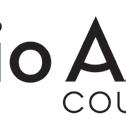
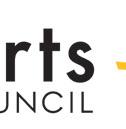







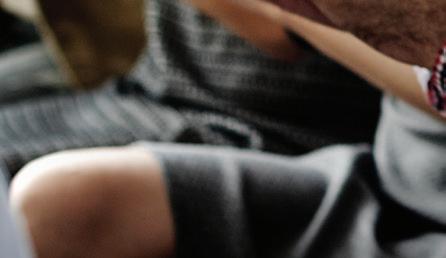

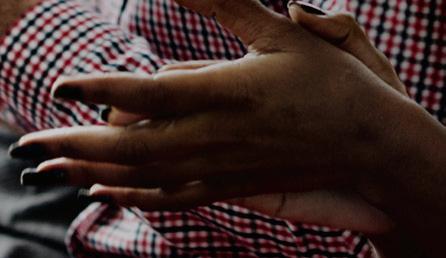
















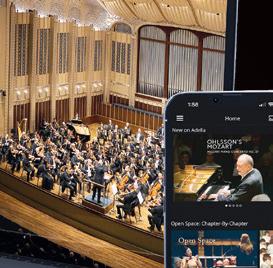





O R C H E S T R A’ S D I G I TA L H O M E O N A D E L L A
Na me d af t er our pione ering founder, Adella Pren t is s Hughe s , our s t re a ming s er vic e of fers access to exclusive lives treams, on-demand c onc er t s , sp e c ia l in t er views , a nd more .
Ava ila ble on t he web, iOS , A ndroid, Roku, A pple T V, A ndroid T V, a nd Chrome c a s t .


Try it free by visiting stream. adella .live/subscribe and using the promo code ADELLA30 at checkout








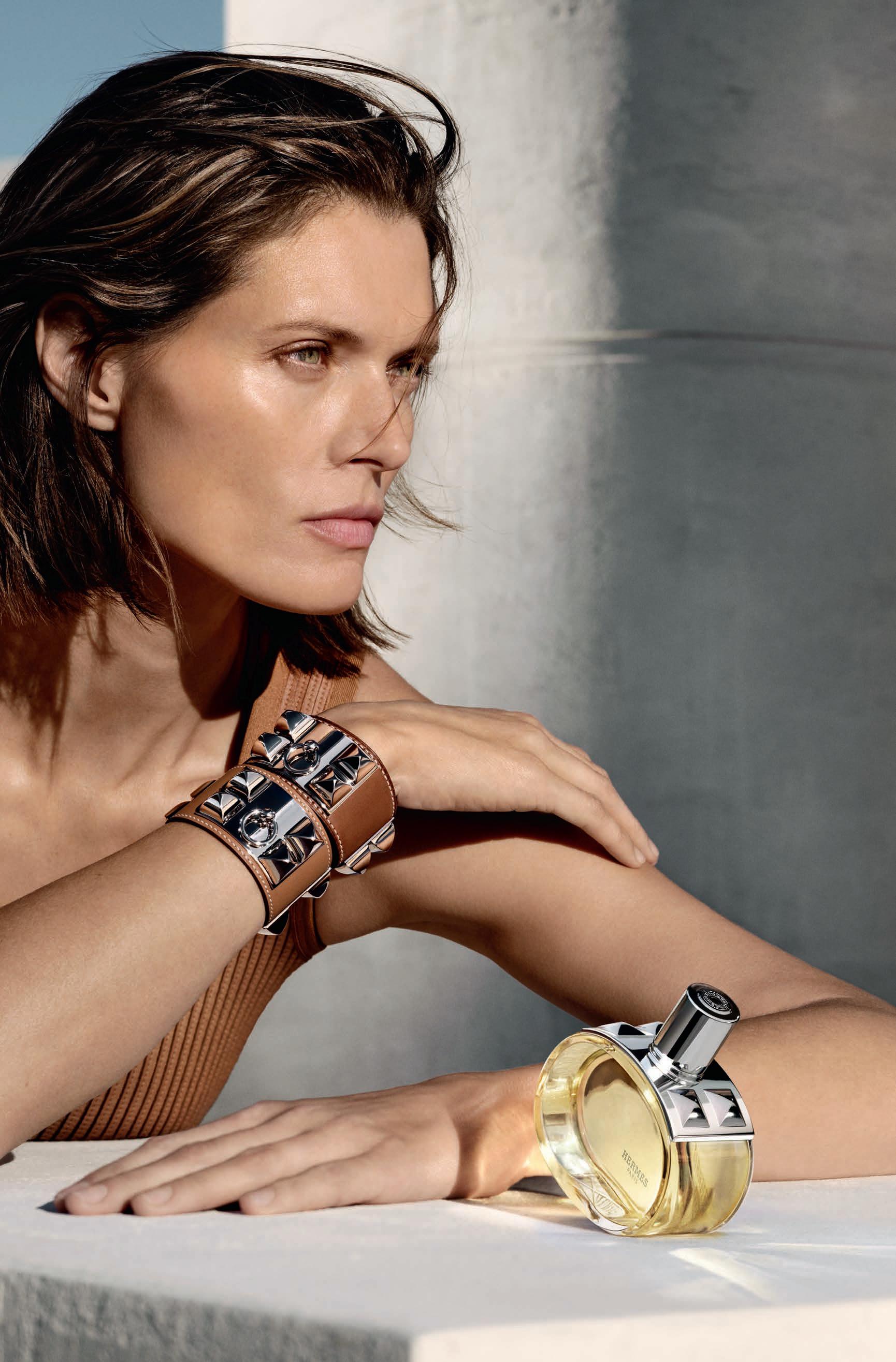
Christoph Koncz
AU S T R I A N C O N D U C TO R Christoph Koncz is highly acclaimed, and this past season marked his second as music director of the Orchestre Symphonique de Mulhouse, while he continued his tenure as principal conductor of the Deutsche Kammerakademie Neuss am Rhein.
Recent highlights include appearances with the Swedish Radio Symphony Orchestra, Orchestre de Paris, Mahler Chamber Orchestra, and London Symphony Orchestra; returns to the Hong Kong Philharmonic Orchestra and the Orchestre Métropolitain de Montréal; and a collaboration with the Orquestra Sinfônica do Estado de São Paulo and Víkingur Ólafsson. He is passionate about expanding the repertoire, often championing works by lesser-known composers.
An established opera conductor, Koncz recently led productions with Opera North (The Magic Flute), Opéra National du Rhin (La traviata), and returned to Prague State Opera for performances of D on Giovanni. He also conducted a production of The Winter’s Tale at the Wiener Staatsballett.
Koncz has appeared at the Salzburg Festival as well as Festival Masevaux with the Orchestre Symphonique de Mulhouse. He has also conducted the Pan-Caucasian Youth Orchestra at the Tsinandali Festival with Lisa Batiashvili. In addition, he collaborates with soloists such as Renaud Capuçon, Gautier Capuçon, Stéphanie d’Oustrac,

Alexandre Kantorow, Alexander Malofeev, and Eloïse Bella Kohn. Koncz has led recordings with the Deutsche Kammerakademie Neuss am Rhein, Rundfunk-Sinfonieorchester Berlin, and the Philharmonia Orchestra, among others. As a violinist, his recording of Mozart’s complete violin concertos with Les Musiciens du Louvre was released by Sony Classical in 2020 under the title Mozart’s Violin, causing an international sensation for being the first recording of these famous works on the composer’s original Baroque violin.
Koncz began attending Vienna’s University of Music at age 6 and was principal second violin of the Wiener Philharmoniker for over 15 years, playing a 1707 Stradivarius. His debut at the 2013 Salzburg Mozartwoche was followed by performances at renowned venues such as the Berlin Philharmonie, Vienna Musikverein, KKL Lucerne, and Concertgebouw Amsterdam, as well as at the Salzburg Festival.







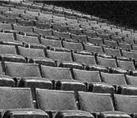










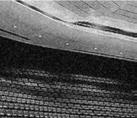


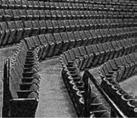
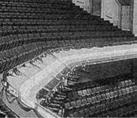







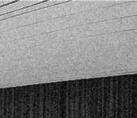









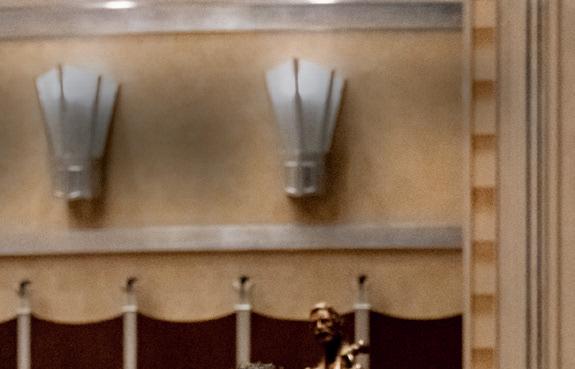

The Cleveland Orchestra rehearses under the baton of guest conductor Bernard Labadie
N O W F I R M LY I N I T S S E C O N D C E N T U RY ,
The Cleveland Orchestra, under the leadership of Franz Welser-Möst since 2002, is one of the most sought-after performing ensembles in the world. Year after year, the ensemble exemplifies extraordinary artistic excellence, creative programming, and community engagement. In recent years, The Ne w York Times has called Cleveland “the best in America” for its virtuosity, elegance of sound, variety of color, and chamber-like musical cohesion.
Founded by Adella Prentiss Hughes, the Orchestra performed its inaugural concert in December 1918. By the middle of the century, decades of growth and sustained support had turned the ensemble into one of the most admired around the world.
The past decade has seen an increasing number of young people attending concerts, bringing fresh attention to The Cleveland Orchestra’s legendary sound and committed programming. More recently, the Orchestra launched several bold digital projects, including the streaming platform Adella.live and its own recording label. Together, they have captured the Orchestra’s unique artistry and the musical achievements of the Welser-Möst and Cleveland Orchestra partnership.
The 2025 – 26 season marks Franz Welser-Möst’s 24th year as Music Director, a period in which The Cleveland


Orchestra has earned unprecedented acclaim around the world, including a series of residencies at the Musikverein in Vienna, the first of its kind by an American orchestra, and a number of celebrated opera presentations.
Since 1918, seven music directors Nikolai Sokoloff, Artur Rodziński, Erich Leinsdorf, George Szell, Lorin Maazel, Christoph von Dohnányi, and Franz Welser-Möst have guided and shaped the ensemble’s growth and sound. Through concerts at home and on tour, broadcasts, and a catalog of acclaimed recordings, The Cleveland Orchestra is heard today by a growing group of fans around the world.

Franz Welser -Möst, Music Director
K E LV I N S M I T H FA M I LY C H A I R
F I R S T V I O L I N S
Joel Link
C O N C E RT M A S T E R Blossom-Lee Chair
Liyuan Xie
F I R S T A S S O C I AT E
C O N C E RT M A S T E R
Virginia M. Lindseth, PhD, Chair
Jung-Min Amy Lee
A S S O C I AT E
C O N C E RT M A S T E R
Gretchen D. and Ward Smith Chair
Stephen Tavani
A S S I S TA N T
C O N C E RT M A S T E R
Dr. Ronald H. Krasney Chair
Wei-Fang Gu
Drs . Paul M. and Renate H. Duchesneau Chair
Kim Gomez
Elizabeth and Leslie Kondorossy Chair
Chul-In Park
Harriet T. and David L . Simon Chair
Miho Hashizume
Theodore Rautenberg Chair
Jeanne Preucil Rose
Larry J B and Barbara S
Robinson Chair
Alicia Koelz
Oswald and Phyllis Lerner
Gilroy Chair
Yu Yuan
Patty and John Collinson Chair
Isabel Trautwein
Trevor and Jennie Jones Chair
Katherine Bormann
Analise Handke
Gladys B Goetz Chair
Zhan Shu
Youngji Kim
Paul and Lucille Jones Chair
Genevieve Smelser
S E C O N D V I O L
I N S
Stephen Rose*
Alfred M and Clara T Rankin Chair
Eli Matthews1
Patricia M. Kozerefski and Richard J Bogomolny Chair
Jason Yu2
James and Donna Reid Chair
Sonja Braaten Molloy
Carolyn Gadiel Warner
Elayna Duitman
Ioana Missits
Jeffrey Zehngut^
Sae Shiragami
Kathleen Collins
Beth Woodside
Emma Shook
Dr Jeanette Grasselli Brown and Dr Glenn R Brown Chair
Yun-Ting Lee
Deborah L . Neale Chair
Jiah Chung Chapdelaine
Gawon Kim
V I O L A S
Wesley Collins*
Chaillé H and Richard B
Tullis Chair
Stanley Konopka2
Mark Jackobs
Jean Wall Bennett Chair
Lisa Boyko
Richard and Nancy Sneed Chair
Richard Waugh
Lembi Veskimets
The Morgan Sisters Chair
Eliesha Nelson^
Anthony and Diane
Wynshaw-Boris Chair
Joanna Patterson Zakany
William Bender
Thomas Lauria and Christopher Lauria Chair
Gareth Zehngut^
This roster lists full-time members of The Cleveland Orchestra . The number and seating of musicians on stage varies depending on the piece being performed Seating within the string sections rotates on a periodic basis
C E L L O S
Mark Kosower*
Louis D Beaumont Chair
Richard Weiss1
The GAR Foundation Chair
Charles Bernard2
Helen Weil Ross Chair
Bryan Dumm
Muriel and Noah Butkin Chair
Tanya Ell
Thomas J and Judith Fay
Gruber Chair
Ralph Curry
Brian Thornton
William P. Blair III Chair
David Alan Harrell
Martha Baldwin
Dane Johansen
Marguerite and James Rigby Chair
Paul Kushious
B A S S E S
Maximilian Dimoff*
Clarence T. Reinberger Chair
Charles Paul1
Mary E . and F. Joseph
Callahan Chair
Derek Zadinsky2
Mark Atherton
Thomas Sperl
Henry Peyrebrune
Charles Barr Memorial Chair
Charles Carleton
Scott Dixon
Brandon Mason
H A R P
Trina Struble*
Alice Chalifoux Chair
F LU T E S
Joshua Smith*
Elizabeth M. and William C. Treuhaft Chair
Saeran St. Christopher
Jessica Sindell2^
Austin B and Ellen W Chinn Chair
Mary Kay Fink
P I C C O L O
Mary Kay Fink
Anne M and M Roger Clapp Chair
O B O E S
Frank Rosenwein*
Edith S Taplin Chair
Corbin Stair
Sharon and Yoash Wiener Chair
Jeffrey Rathbun2
Everett D. and Eugenia S .
McCurdy Chair
Robert Walters
E N G L I S H H O R N
Robert Walters
Samuel C and Bernette K
Jaffe Chair
C L A R I N E T S
Afendi Yusuf*
Robert Marcellus Chair
Robert Woolfrey
Victoire G and Alfred M
Rankin, Jr Chair
Daniel McKelway2
Robert R and Vilma L Kohn
Chair
Amy Zoloto
E - F L AT C L A R I N E T
Daniel McKelway
Stanley L and Eloise M
Morgan Chair
B A S S C L A R I N E T
Amy Zoloto
Myrna and James Spira Chair
B A S S O O N S
John Clouser*
Louise Harkness Ingalls Chair
Gareth Thomas
Jonathan Sherwin
C O N T R A B A S S O O N
Jonathan Sherwin

H O R N S
Nathaniel Silberschlag*
George Szell Memorial Chair
Michael Mayhew§ Knight Foundation Chair
Jesse McCormick
Robert B. Benyo Chair
Hans Clebsch
Richard King
Meghan Guegold Hege^
T RU M P E T S
Michael Sachs*
Robert and Eunice Podis
Weiskopf Chair
Jack Sutte
Lyle Steelman2^
James P and Dolores D Storer Chair
Michael Miller
C O R N E T S
Michael Sachs*
Mary Elizabeth and G Robert Klein Chair
Michael Miller
T RO M B O N E S
Brian Wendel*
Gilbert W and Louise I
Humphrey Chair
Richard Stout
Alexander and Marianna C .
McAfee Chair
Shachar Israel2
B A S S T RO M B O N E
Luke Sieve
E U P H O N I U M &
B A S S T RU M P E T
Richard Stout
T U B A
Yasuhito Sugiyama*
Nathalie C Spence and Nathalie S Boswell Chair
T I M PA N I
Zubin Hathi*
Otto G. and Corinne T. Voss Chair
Peter Nichols2
Mr and Mrs Richard K
Smucker Chair
P E RC U S S I O N
Marc Damoulakis*
Margaret Allen Ireland Chair
Thomas Sherwood
Tanner Tanyeri
Peter Nichols
K E Y B OA R D I N S T RU M E N T S
Carolyn Gadiel Warner
Marjory and Marc L
Swartzbaugh Chair
L I B R A R I A N
Michael Ferraguto*
Joe and Marlene Toot Chair
E N D O W E D C H A I R S
C U R R E N T LY
U N O C C U P I E D
Clara G and George P
Bickford Chair
Sandra L Haslinger Chair
Charles M and Janet G
Kimball Chair
Sunshine Chair
Rudolf Serkin Chair
Christoph von Dohnányi
Taichi Fukumura A
Elizabeth Ring and William Gwinn Mather Chair
James Feddeck
Sidney and Doris Dworkin Chair
Lisa Wong
and Chester
Bolton Chair * Principal
Associate Principal
Assistant Principal
Assistant Principal ^ Alum of The Cleveland Orchestra Youth Orchestra
C A L E N D A R FA L L
S E P 2 6 – 2 8
R AV E L’ S B O LÉ RO
Franz Welser-Möst, conductor
The Cleveland Orchestra Chorus
B E R N D R I C H A R D D E U T S C H Urworte
R . S T R A U S S Salome’s Dance from Salome
R AV E L Boléro
O C T 2 & 5
M A H LE R ’ S S O N G
O F T H E E A RT H
Franz Welser-Möst, conductor
Limmie Pulliam, tenor
Iurii Samoilov, baritone
H O N E G G E R Symphony No 3, “Symphonie liturgique”
M A H L E R Das Lied von der Erde
O C T 9 – 1 1
T R I F O N OV P L AY S
B R A H M S
Franz Welser-Möst, conductor
Daniil Trifonov, piano
P RO KO F I E V Symphony No 7
B R A H M S Piano Concerto No 2
O C T 2 3 – 2 6
B E E T H OV E N ’ S
O D E TO J OY
Franz Welser-Möst, conductor
Joélle Harvey, soprano
Taylor Raven, mezzo-soprano
Miles Mykkanen, tenor
Dashon Burton, bass-baritone
The Cleveland Orchestra Chorus
S I B E L I U S Tapiola
B E E T H O V E N Symphony No. 9, “Choral”
R E C I TA L
O C T 2 9
B E AT R I C E R A N A
I N R E C I TA L
Beatrice Rana, piano
Works by Prokofiev, Debussy, and Tchaikovsky
O C T 3 0 & N OV 1 – 2
O H L S S O N P L AY S
M O Z A RT
Franz Welser-Möst, conductor
Garrick Ohlsson, piano
T Y L E R TAY L O R Permissions
M O Z A RT Piano Concerto No. 23
R . S C H U M A N N Symphony No. 3, “Rhenish”
N OV 1 3 – 1 5
M A H LE R ’ S S I X T H
S Y M P H O N Y
Tugan Sokhiev, conductor
Robert Walters, English horn
G E O F F R E Y G O R D O N Mad Song
M A H L E R Symphony No. 6, “ Tragic”
N OV 2 0 – 2 3
DVO Ř Á K ’ S N E W
W O R LD S Y M P H O N Y
Dalia Stasevska, conductor
R E V U E LTA S La Noche de los Mayas*
D V O Ř Á K Symphony No 9, “From the New World”
N OV 2 8 – 3 0
Y U J A WA N G P L AY S
R AV E L
Petr Popelka, conductor
Yuja Wang, piano
R AV E L Piano Concerto for the Left Hand
L I G E T I Concerto for Piano and Orchestra
M U S S O R G S K Y/ R AV E L Pictures at an Exhibition
D E C 4 – 6
H A N D E L’ S M E S S I A H
Bernard Labadie, conductor
Liv Redpath, soprano
Tim Mead, countertenor
Andrew Haji, tenor
Philippe Sly, bass-baritone
The Cleveland Orchestra Chorus
H A N D E L Messiah
W I N T E R
J A N 8 – 10
M O Z A RT ’ S J U P I T E R
S Y M P H O N Y
Franz Welser-Möst, conductor
M O Z A RT Symphony No. 41, “Jupiter”
S H O S TA KO V I C H Symphony No. 11, “ The Year 1905”
J A N 1 5 , 1 7 & 1 8
V E R D I ’ S R E Q U I E M
Franz Welser-Möst, conductor
Asmik Grigorian, soprano
Deniz Uzun, mezzo-soprano
Joshua Guerrero, tenor
Tareq Nazmi, bass
The Cleveland Orchestra Chorus
V E R D I Requiem
F E B 5 – 7
H A D E LI C H P L AY S
M E N D E L S S O H N
Antonello Manacorda, conductor
Augustin Hadelich, violin
M E N D E L S S O H N Violin Concerto
S C H O E N B E R G Chamber Symphony No. 2
S C H U B E RT Symphony No 8, “Unfinished”
F E B 1 2 & 14
H A N N I G A N C O N D U C T S
G E R S H W I N
Barbara Hannigan, conductor
Johanna Wallroth, soprano
C R U M B A Haunted Landscape
R U G G L E S Sun-Treader
B A R B E R Knoxville: Summer of 1915
G E R S H W I N Porgy and Bess: A Symphonic Picture (arr. Bennett)
R E C I TA L
F E B 1 7
M AO F U J I TA I N R E C I TA L
Mao Fujita, piano
Works by Beethoven, Wagner, Berg, Mendelssohn, and Brahms
F E B 1 9 – 2 1
F R E N Z I E D TA N G O
John Adams, conductor
Aaron Diehl, piano
I V E S From Greenland’s Icy Mountains*
T I M O A N D R E S Made of Tunes
J O H N A D A M S Frenzy: a short symphony
P I A Z Z O L L A La Mufa (arr. Adams)*
P I A Z Z O L L A Oblivion (arr. Adams)*
P I A Z Z O L L A Libertango (arr Adams)
F E B 2 6 – 2 8
S T R AU S S ’ S D O N J UA N
Alain Altinoglu, conductor
Alisa Weilerstein, cello
U N S U K C H I N Cello Concerto
R . S T R A U S S Till Eulenspiegel’s
Merry Pranks
R . S T R A U S S Don Juan
M A R 5 , 7 & 8
B R A H M S ’ S T H I R D
S Y M P H O N Y
Jakub Hrůša, conductor
B R A H M S Symphony No. 3
M A RT I N Ů Symphony No. 3
K A P R Á L O VÁ Military Sinfonietta
M A R 1 2 – 1 5
B E E T H OV E N ’ S
FAT E F U L F I F T H
Elim Chan, conductor
Michael Sachs, trumpet
S T R AV I N S K Y Suite from Pulcinella
H AY D N Trumpet Concerto
B E E T H O V E N Symphony No. 5
R E C I TA L
M A R 1 7
T H E K A N N E H - M A S O N S
I N R E C I TA L
Sheku Kanneh-Mason, cello
Isata Kanneh-Mason, piano
Works by Mendelssohn, N. Boulanger, R. Schumann, and Clarke
M A R 1 9 – 2 1
C H A N C O N D U C T S
B A RTÓ K
Elim Chan, conductor
Patricia Kopatchinskaja, violin
D A N I E L K I D A N E Sun Poem*
B A RT Ó K Violin Concerto No. 1
B A RT Ó K Dance Suite*
S C R I A B I N The Poem of Ecstasy
S P R I N G
A P R 2 – 4
D E B U S S Y ’ S L A M E R
Daniele Rustioni, conductor
Paul Jacobs, organ
FA U R É Suite from Pelléas et Mélisande
P O U L E N C Concerto for Organ, Strings , and Timpani
C A S E L L A Italia
D E B U S S Y La mer
A P R 9 – 1 1
S C H U B E RT &
S H O S TA KOV I C H
Santtu-Matias Rouvali, conductor
Sol Gabetta, cello
S H O S TA KO V I C H Cello Concerto No. 2
S C H U B E RT Symphony No. 9, “ The Great”
R E C I TA L
A P R 1 6
A LE X A N D R E
K A N TO RO W I N R E C I TA L
Alexandre Kantorow, piano
Works by J.S. Bach, Medtner, Chopin, Scriabin, and Beethoven
A P R 2 3 , 2 5 & 2 6
B R I T T E N ’ S WA R
R E Q U I E M
Daniel Harding, conductor
Tamara Wilson, soprano
Andrew Staples, tenor
Christian Gerhaher, baritone
The Cleveland Orchestra Chorus
The Cleveland Orchestra Children’s Chorus
B R I T T E N War Requiem
A P R 3 0 & M AY 2
M E N D E L S S O H N ’ S
R E F O R M AT I O N
S Y M P H O N Y
Jörg Widmann, conductor
J Ö R G W I D M A N N Fanfare for Ten Brass Instruments
J Ö R G W I D M A N N Con brio
J Ö R G W I D M A N N Danse macabre
M E N D E L S S O H N Symphony No. 5, “Reformation”
R E C I TA L
M AY 5
M A RC - A N D R É H A M E LI N & M A R I A J OÃO P I R E S I N R E C I TA L
Marc-André Hamelin, piano
Maria João Pires, piano
Program to be announced
M AY 7 – 9
WAG N E R ’ S
G ÖT T E R DÄ M M E RU N G
Franz Welser-Möst, conductor
Jörg Widmann, clarinet
P RO KO F I E V Symphony No. 1, “Classical”
O L G A N E U W I RT H Zones of Blue* WA G N E R Excerpts from Götterdämmerung
M AY 1 6 , 2 1 & 24
B E E T H OV E N ’ S F I D
Franz Welser-Möst, conductor
Malin Byström, soprano (Leonore)
David Butt Philip, tenor (Florestan)
Tomasz Konieczny, bass-baritone (Don Pizarro)
Martin Summer, bass (Rocco)
Dashon Burton, bass-baritone (Don Fernando)
Ashley Emerson, soprano (Marzelline)
Owen McCausland, tenor (Jaquino)
The Cleveland Orchestra Chorus
B E E T H O V E N Fidelio Opera presentation sung in German with projected supertitles
M AY 2 2
H E RO ’ S S O N G
Franz Welser-Möst, conductor
Leila Josefowicz, violin
Trina Struble, harp
A D O L P H U S H A I L S T O R K Epitaph for a Man Who Dreamed
B A C E W I C Z Symphony No. 4
J Ü R I R E I N V E R E Concerto for Violin, Harp, and Orchestra
D V O Ř Á K Hero’s Song
* Not performed on the Friday matinee concert
Generous support for the 2025 – 26 Recital Series provided by the Art of Beauty Company, Inc.
L AT E S E AT I N G
As a courtesy to the audience members and musicians in the hall, late-arriving patrons are asked to wait quietly until the first convenient break in the program. These seating breaks are at the discretion of the House Manager in consultation with the performing artists .
C E L L P H O N E S , WAT C H E S &
O T H E R D E V I C E S
As a courtesy to others , please silence all electronic devices prior to the start of the concert .
P H O T O G R A P H Y, V I D E O G R A P H Y & R E C O R D I N G
Audio recording, photography, and videography are prohibited during performances at Severance Photographs can only be taken when the performance is not in progress .
For the comfort of those around you, please reduce the volume on hearing aids and other devices that may produce a noise that would detract from the program. For Infrared Assistive-Listening Devices , please see the House Manager or Head Usher for more details .
Contact an usher or a member of house staff if you require medical assistance. Emergency exits are clearly marked throughout the building Ushers and house staff will provide instructions in the event of an emergency
Regardless of age, each person must have a ticket and be able to sit quietly in a seat throughout the
N E W ! T H E C L E V E L A N D O R C H E S T R A A P P
Mobile App of TCO

Explore upcoming concerts , purchase and access your tickets , receive performance updates , and more .
For more information and direct links to download, visit clevelandorchestra .com/tcoapp or scan the code with your smartphone camera to download the app for iPhone or Android.
Available for iOS and Android on Google Play and at the Apple App Store .

performance. Classical Season subscription concerts are not recommended for children under the age of 8. However, there are several age-appropriate series designed specifically for children and youth, including Music Explorers (for 3 to 6 years old) and Family Concerts (for ages 7 and older) F O O D & M E RC H A N D I S E
Beverages and snacks are available at bars throughout Severance Music Center For Cleveland Orchestra apparel, recordings , and gift items , visit the Welcome Desk in Lerner Lobby. T E L L U S A B O U T YO U R E X P E R I E N C E
We are so glad you joined us! Want to share about your time at Severance? Send your feedback to cx@clevelandorchestra .com. Hearing directly from you about what we are doing right and where we can improve will help us create the best experience possible.
The Cleveland Orchestra is grateful to the following organizations for their ongoing generous support of The Cleveland Orchestra: the State of Ohio and Ohio Arts Council and to the residents of Cuyahoga County through Cuyahoga Arts and Culture
Cleveland Orchestra performances are broadcast as part of regular programming on ideastream/WCLV Classical 90.3 FM, Saturdays at 8 PM and Sundays at 4 PM.
The Cleveland Orchestra is proud of its long-term partnership with Kent State University, made possible in part through generous funding from the State of Ohio
The Cleveland Orchestra is proud to have its home, Severance Music Center, located on the campus of Case Western Reserve University, with whom it has a long history of collaboration and partnership
©2025 The Cleveland Orchestra and the Musical Arts Association Program books for Cleveland Orchestra concerts are produced by The Cleveland Orchestra and are distributed free to attending audience members . E D I T O R I A L
Kevin McBrien, Editorial & Publications Manager, The Cleveland Orchestra kmcbrien@clevelandorchestra .com
Ellen Sauer Tanyeri, Archives & Editorial Assistant, The Cleveland Orchestra
D E S I G N
Elizabeth Eddins, Eddinsdesign eddinsdesign@gmail.com
A D V E R T I S I N G Live Publishing Company, 216-721-1800


Belong






